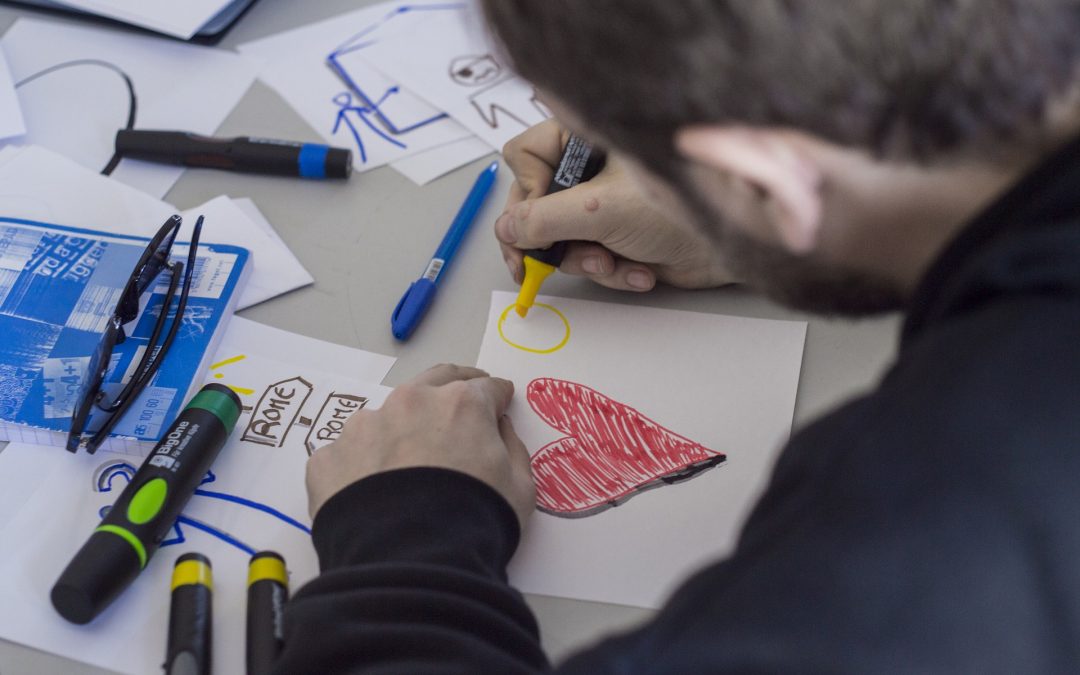Creativity is a strange chariot. Creativity likes activity, not standing still. If I make a single observation about all the creative people I have ever known, it is that we find it hard to rest. When the chariot comes to a standstill, we start to fret.
When I stop and rest, my thoughts turn dark. Somewhere in that darkness, rest is waste. Rest is a lost opportunity. And, if I lie down and close my eyes even once, I will sleep for 100 years, lost to the jungle.
I’m wrong of course. Rest is an essential ingredient in creativity. I have some of my best ideas when I am lying semi-conscious in my restorative yoga class. (This can be very inconvenient.) And we all know the power of a shower to bring out our creative genius. Pavarotti, eat your heart out. Einstein, move over. K = 1+1000
But restlessness is different. Restless is what I become when I do not go to restorative yoga or go for an early morning walk. Restlessness is horrible. It is full of discontent and self-doubt. You might be wondering where I am going with this. After all, the title says, ‘Action keeps the darkness away’. This is true in my experience. When I am at my darkest, doing something helps get me back on track.
But I have found that not anything will do. There are three kinds of actions that keep the darkness away, and the first is ‘active rest’.
Rest is an active verb
Have you read Alex Soojung-Kim Pang’s bestselling book, Rest: Why you get more done when you work less? He tells us: “Physical activity is more restful than we expect, and mental rest is more active than we realise.”
When creativity deserts us, it might be time for active rest. Restorative yoga? Yes, please. Table tennis? Playing ping pong is the only time in my week that I forget about everything in my life. My focus narrows to the orange ball, the hand that holds my bat, and the eyes of my opponent.
Action within boundaries
The second action that keeps the darkness away is to create a structure. Van Gogh worked on a canvas. He didn’t paint the wall. Braindumps with no structure take a lot of tidying up. Sometimes we give up on them.
Creativity mentor, Mykel Dixon suggests that this structure can be very simple. In 2014, Dixon wrote, recorded and released a song every week for 50 weeks. In 2015, he recorded a spoken word piece every week for 50 weeks. He was then inspired to apply his creative method to writing a book. In late 2015, he wrote every day for 50 days. He made this into a book: Just do 5omething: A handbook for turning dreamers into makers.
My writing programs are highly structured – it’s how I get my clients to focus on the content and make their ideas strong and relevant. And it also means that we can use voice recordings to create the first draft. It’s acting without creating chaos. Not every action is worth taking.
With creativity, quantity leads to quality, says Kieran Flanagan. She is the co-founder of the Impossible Institute. That is true, too. Structured quantity.
Turn action into a game
I used to use my To-do list to trick myself into doing my least favourite tasks. I’d write my list and then I’d number it. I’d always put the horrid ones at the top. The game was that I couldn’t move on to the fun things until the horrid ones got done. Simple!
Making work into play is one of the best ways to stay in action. Pang reminds us of the term deep play. Anthropologist Clifford Geertz coined the term when writing about Balinese cockfighting. (I’m sensing a problem with that article.)
Table tennis fits this description for me. It is mentally absorbing. I use some of the skills I use at work (competition, strategy). And it offers a similar satisfaction to work. Excitement. Engagement. Challenge.
Little challenges turn action into a game that is fun to play. How many calls will it take before I make friends with this person I am cold calling? Or can I pick up the phone five times before 10 am? I make calling people (I don’t like the term prospects) a game by mixing people I know well with people I know very little. More fun.
Snapshot
Rest (not restlessness) drives the creativity chariot. If we flog the horses, they’ll keel over (which is cruel). Learn the art of active rest, act in a structured way, and turn it all into a game. That keeps the darkness away.
PS: Want more? You may like: Are you ready to share your expertise by writing a book?

